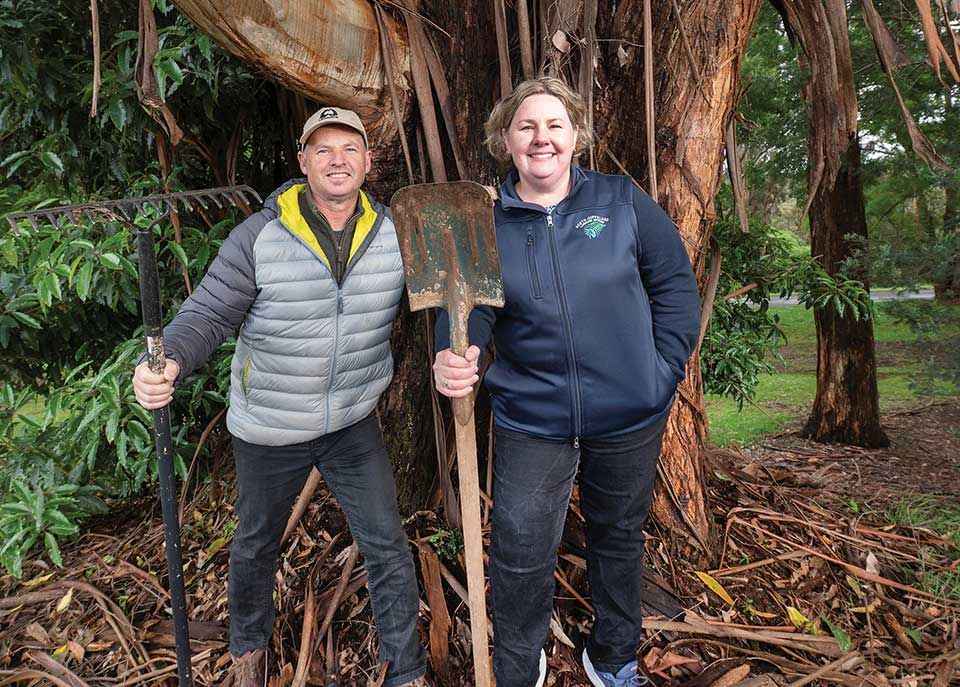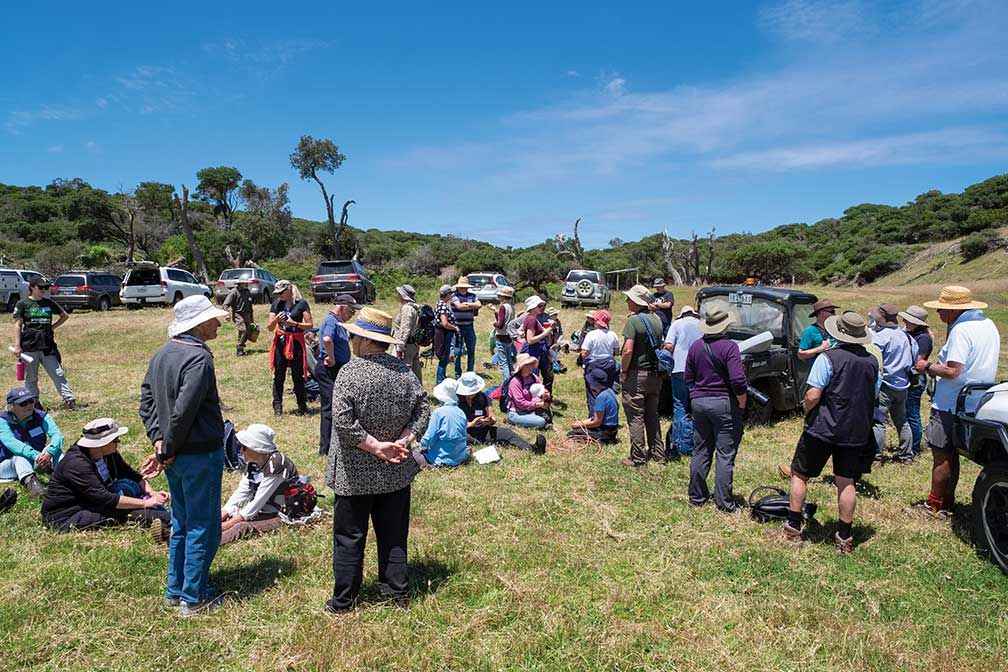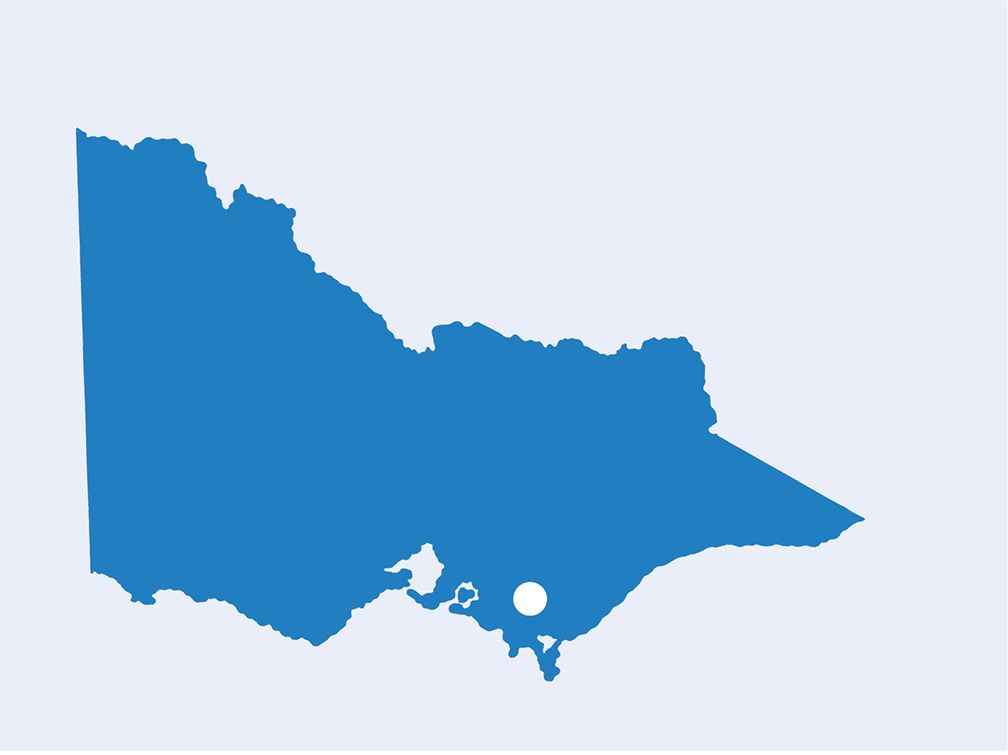Victorian Landcare Magazine - Summer 2023-24, Issue 86

The South Gippsland Landcare Network (SGLN) was formed in 1995. It is made up of 13 member Landcare groups with over 500 families who farm and manage land in our region.
The network area covers 270,000 hectares, bordered by the Strzelecki Ranges in the north and stretching 100-kilometres from Nyora in the north-west to Port Welshpool in the south-east.
As chair of the board, it’s clear to me that managing, developing, and supporting our staff is a big challenge for the network. When the current board formed SGLN had already stepped away from its relationship with the West Gippsland CMA who were the host employer of the network’s Landcare staff. An important consequence of this decision was the loss of the CMA’s human resources framework and staff.
As a Landcare facilitator you need to take any opportunity to network with other Landcare facilitators and hear what’s happening in their regions.
Responsibility for human resources now falls on the SGLN board. Like most other networks, our board is made up of a group of people who share a desire to protect the environment. I doubt any of us expected to find ourselves in a situation where we had to actively recruit and manage staff. We have a broad skillset, but none of us have formal human resources qualifications. In my case, I am self-employed and rarely succeeded in getting my children to clean their bedrooms let alone deliver a $100,000 project on time and within budget.
I don’t think I can exaggerate the enormous responsibility of staff management, or the consequences of messing it up. Our staff are without a doubt our most valuable asset. Collectively and individually, like any team (including boards), they also have their weaknesses. The skills, ideas and passions of our staff present us with many opportunities. Losing their support through dissatisfaction, resignation or funding cuts is the biggest threat to our operation.
SGLN is a not-for-profit organisation reliant on project-based funding. This adds its own challenges to attracting and keeping staff. We don’t have bucketloads of cash to throw at salaries, staff parties or even a coffee machine, and we can’t offer our employees the security of tenure many seek.
The skills, ideas and passions of our staff present us with many opportunities.
We must appeal to the desire of our staff to do something positive for the environment.
The requirements of grants programs further complicate our task. Many grants have specific short-term outcomes which are not always consistent with addressing complex, large-scale, environmental problems. Projects must often be shaped to meet the funders’ objectives rather
than those of the network. The amount of time that must be spent on applying for, administering and reporting on grants – especially when all our staff are part-time and every hour is precious – has a real impact on their ability to make a difference.

Above: A morning tea in the paddock for the launch of the Bunurong Coast Community On-ground Action on Pest Plants and Animals Project in December 2022.
The amount of volunteer time and effort involved in staff management can be overwhelming. The SGLN board has established an Employment Steering Committee (ESC) which is responsible for recruiting and supervising staff, preparing position descriptions and employment contracts, carrying out performance reviews and negotiating salaries. It’s daunting, even before you consider the complex legislative framework around employment and industrial relations. Policies to provide an inclusive, safe, healthy, and supportive workplace must be developed, implemented, and updated.
The SGLN board has established an Employment Steering Committee (ESC) which is responsible for recruiting and supervising staff, preparing position descriptions and employment contracts, carrying out performance reviews and negotiating salaries.
The ESC aims to meet quarterly or more frequently if necessary. Two members of the four-person team attend a fortnightly meeting with our two Landcare facilitators on a revolving basis which lasts between 60-90 minutes. Luckily, we have a great team of employees so our interactions with staff are almost always positive, and in my opinion, enjoyable. However, as meetings with staff must occur during business hours it is sometimes difficult for three of our ESC members who are also employed during these hours to attend.
Making Landcare roles attractive to a wide range of candidates is also a challenge. Under current funding models I don’t feel that we pay our staff what they are truly worth. We try to be as flexible as possible regarding hours, days and place of work, holidays, and professional development opportunities, but there is only so much we can offer.
I believe there is considerable scope for Landcare Victoria Incorporated (LVI) to broker deals or advocate for legislative changes to boost Landcare salary packages and achieve tax incentives, so they are comparable to the private sector. One network has little bargaining power, but with LVI acting on behalf of all the networks we could achieve some meaningful gains that we could pass on to our employees to show them how much we appreciate what they do for the Landcare community.
There are also opportunities for LVI and DEECA to consult with boards about what strategies and resources they need to help them negotiate their role as employers.
I would like to stress that SGLN is very grateful for the funding we have received from DEECA’s 2021-24 Victorian Landcare Facilitator Program (VLFP). The 2021-24 VLFP Guidelines have enabled us to secure VLFP funding for our two Landcare facilitator positions. We also acknowledge support from the West Gippsland CMA. I believe that the SGLN is not alone in needing more resources to help volunteer boards manage their employment responsibilities as effectively as possible.
Jillian Staton is chair of the SGLN. For more information email jillian@board.sgln.net.au

Above: